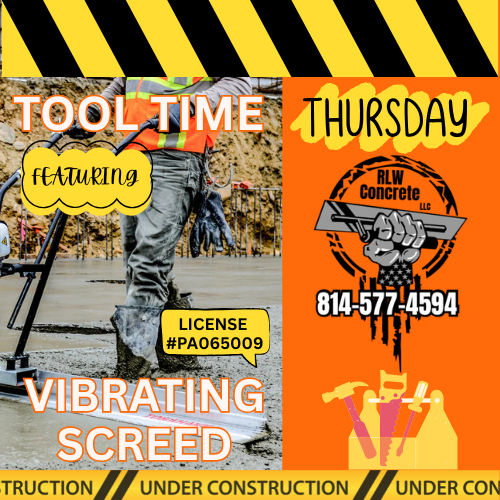Concrete 101: Joints in Concrete – Control vs. Expansion
- rlwconcrete33
- Jul 26
- 2 min read
Concrete is strong—but it’s not immune to cracking. As it cures and shrinks or reacts to temperature changes, concrete naturally wants to move. That’s where joints come in.
Strategically placed joints can help manage this movement, reducing the risk of random cracks and improving the longevity of a concrete slab. Whether you're pouring a driveway, sidewalk, or garage floor, understanding the purpose and types of concrete joints can help you plan smarter and finish stronger.
🔹 Why Are Joints Important?
When concrete cures, it shrinks slightly. It also expands and contracts with temperature changes. Without designated places to relieve that pressure, the slab may crack unpredictably—sometimes in highly visible or structurally critical spots.
Joints allow controlled movement of the concrete, reducing the likelihood of unsightly or damaging cracks.
🔧 Types of Joints in Concrete
1. Control Joints (Contraction Joints)
Control joints are placed in concrete to intentionally create a weak point where a crack is likely to occur. They're usually sawed or tooled into the surface soon after finishing and should be spaced and placed correctly to be effective.
Spacing tip: Control joints are typically placed at intervals of 24–36 times the slab thickness (in inches).For a 4" slab: every 8–12 feet.
Depth guide: Joints should be at least ¼ of the slab's depth.
Control joints help guide where cracks occur—making them predictable and less visible.
2. Expansion Joints
Unlike control joints, expansion joints are full-depth separations between slabs or between a slab and a structure (like a wall or column). These are used where movement is expected due to thermal expansion or where concrete meets another material.
They are often filled with flexible material like rubber or foam to absorb the movement.
Common locations: between a driveway and garage floor, sidewalks and curbs, or large slab sections.
3. Construction Joints
Construction joints are placed where a pour ends and will continue later. These are not meant to relieve stress but simply mark the transition between two separate pours.
They may include dowel bars or keys to help transfer loads across the joint and keep both sides aligned.
📐 Visual Planning Matters
While visuals can’t be included in this post, here’s a simple way to plan joint placement:
Picture a grid across your slab with evenly spaced lines.
Avoid placing joints through corners or near re-entrant angles (like where a sidewalk turns).
For irregular shapes, more careful joint design may be needed.
🧠 Final Thoughts
Concrete joints might not be flashy, but they do the critical behind-the-scenes work of managing movement and preventing random cracking. When placed correctly, they can help maintain the appearance and performance of your concrete for years to come.
Like everything in concrete work, planning and timing are key—especially when it comes to cutting control joints before cracks happen naturally.
⚖️ Legal Disclaimer:
This blog post is intended for informational purposes only and should not be taken as professional, legal, or construction advice. Every project is unique, and conditions may vary. RLW Concrete LLC is not liable for any actions taken based on this information. Always consult with a qualified professional for your specific needs.





Comments